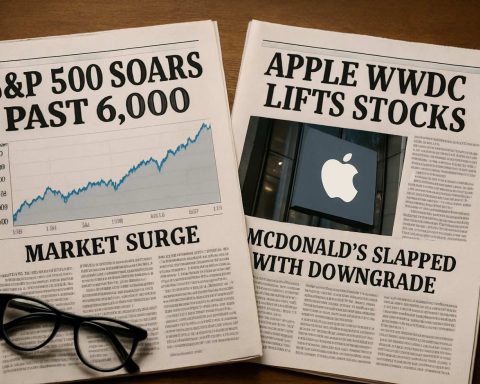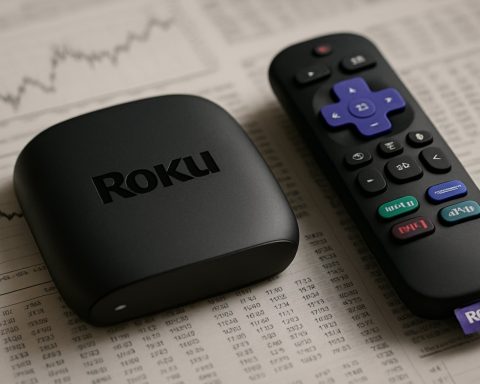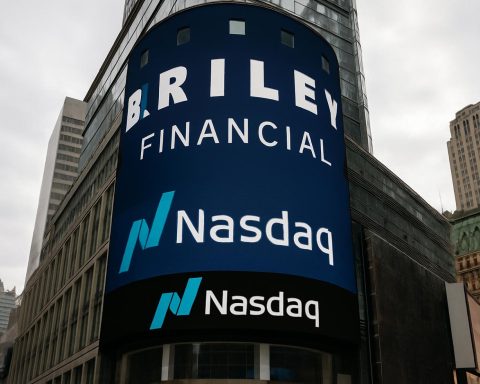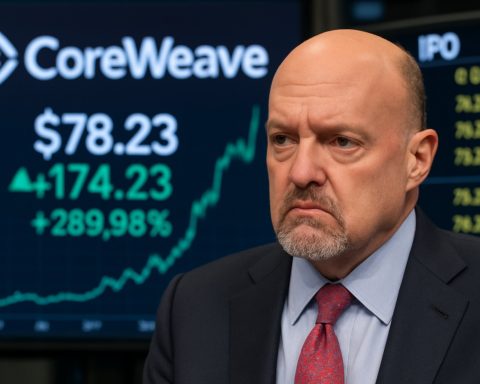- Disney faces a complex balance between lucrative contracts and necessary cost-cutting measures.
- ESPN’s Stephen A. Smith signs a significant $100 million contract, reflecting Disney’s reliance on star power despite economic pressures.
- The company’s shares have seen volatility due to investor concerns over spending.
- Disney has increased wages significantly for its animation department, recognizing unionized efforts with improved benefits.
- The company grapples with a 6% workforce reduction amidst these financial commitments.
- Disney’s strategy raises questions about balancing innovation with financial prudence in a competitive market.
- Stakeholders are keenly observing whether Disney’s bold investments will translate into sustainable success.
Exuberant paychecks and strategic cutbacks paint a contradictory picture for Disney, as the entertainment giant navigates a precarious tightrope between lavish spending and essential cost-cutting. Bluebird skies hover over ESPN’s Stephen A. Smith, who recently inked a colossal five-year contract worth $100 million, elevating his paycheck far beyond his previous $12 million annual haul. Yet, the shifting winds at Disney (NYSE:DIS) have sent investors scurrying, casting doubt as shares dipped in Friday’s trading.
Smith stands as a beacon of consistency at ESPN, with his show, “First Take,” a resounding success amidst a sea of sinking ratings. Fully aware of his worth and the prowess he brings to the network, Smith embodies confidence in the face of corporate austerity. His ambitious contract speaks volumes about Disney’s faith in star power even during turbulent times.
Meanwhile, beneath the shimmering surface of Disney’s magical facade, a new chapter unfolds for its animation employees. The company, acknowledging the efforts of its newly unionized workforce, has enacted soaring wage increases—35% for production coordinators, 29% for supervisors, and a hearty 24% for managers. Alongside these financial boosts, enhanced pensions and health benefits signal Disney’s commitment to supporting its creative backbone.
Yet, this tapestry of opulence and austerity reveals a critical enigma: Can Disney sustain such lavish commitments while wrestling with a 6% workforce reduction? The juxtaposition of rewarding talent and slashing jobs presents a dichotomy hard to reconcile.
In a world bustling with incessant competition and rapidly changing consumer appetites, Disney’s latest moves underscore a larger narrative. The tension between innovation and fiscal restraint poses a question that echoes across boardrooms and stock markets: Is Disney’s current strategy a testament to foresight, or a perilous gamble on star power in a volatile media landscape?
Key takeaways on this evolving saga underline the importance of balancing bold investments with sustainable growth. As Disney writes its next chapter, investors and employees alike will watch closely to see if this blend of ambition and prudence can keep the enchantment alive.
Is Disney’s Strategy a High-Stakes Gamble or a Bold Vision for Growth?
Disney’s simultaneous increase in compensation for top talent and its more modest workforce reflects the larger complexities within the entertainment industry today. As the company invests heavily in personalities like ESPN’s Stephen A. Smith while embracing significant layoffs, we must ask:
Real-World Use Cases & Industry Trends
1. Star Power in Media: Stephen A. Smith’s $100 million deal epitomizes an industry trend where individual star power carries immense value. Personality-driven content has proven resilient in an age dominated by streaming and digital platforms.
2. Unionization Impact: Disney’s wage increase for animation staff following successful unionization efforts represents a growing industry-wide emphasis on fair compensation and benefits. This move is crucial, as creative talent is essential for maintaining competitive content quality.
3. Streaming Wars: Disney+, the company’s foray into streaming, continues to grow subscriber numbers amid fierce competition with Amazon Prime, Netflix, and others. This platform remains central to Disney’s strategy for securing future revenue streams.
Market Forecasts
– Investment in Original Content: To stay competitive, Disney will likely allocate more resources to developing unique, compelling content, balancing reliance on star-driven shows with innovative series or movies.
– Technology Integration: Virtual reality (VR) and augmented reality (AR) technologies may feature more prominently in Disney’s offerings, as technology becomes a differentiator in engaging younger audiences.
Challenges & Limitations
– Sustainability of High Salaries: Balancing large salaries for on-camera talent like Smith while maintaining profitability amidst workforce reductions is challenging.
– Recession Fears: Economic downturns can affect advertising revenues and consumer spending, key aspects of Disney’s broader business model.
Pros & Cons Overview
– Pros:
– High-profile talent can stabilize viewership numbers.
– Unionized wage hikes can increase employee satisfaction and productivity.
– Cons:
– High costs may be unsustainable long-term.
– Potential impact on employee morale due to layoffs.
Insights & Predictions
– Resilience in Ratings: Disney’s investment in prominent personalities suggests a strategy to sustain robust ratings.
– Adaptation to Consumer Behavior: Disney’s ability to change with consumer preferences—particularly with digital consumption rising—is vital.
Actionable Recommendations
1. Diversify Content Channels: To mitigate risk, Disney should continue to diversify its content offerings across platforms, increasing its reach and appeal.
2. Invest in Tech: Leverage new technologies to create interactive experiences, drawing in diverse audiences.
3. Monitor Industry Shifts: Stay alert to changes in advertising technology and viewer preferences to position the company advantageously.
For further insights, you can explore more about Disney directly at their website – Disney.
Disney’s current strategy is a blend of high-stakes investment and strategic foresight. Whether Disney can transform this plan into long-term success rests on its ability to adapt rapidly in a dynamic industry landscape.













